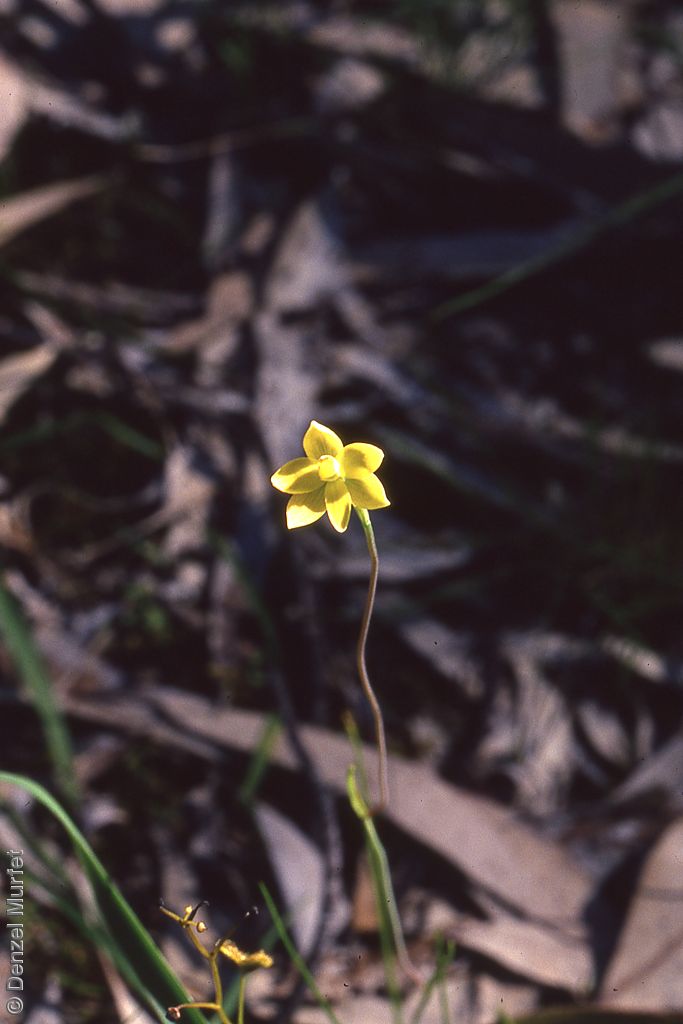
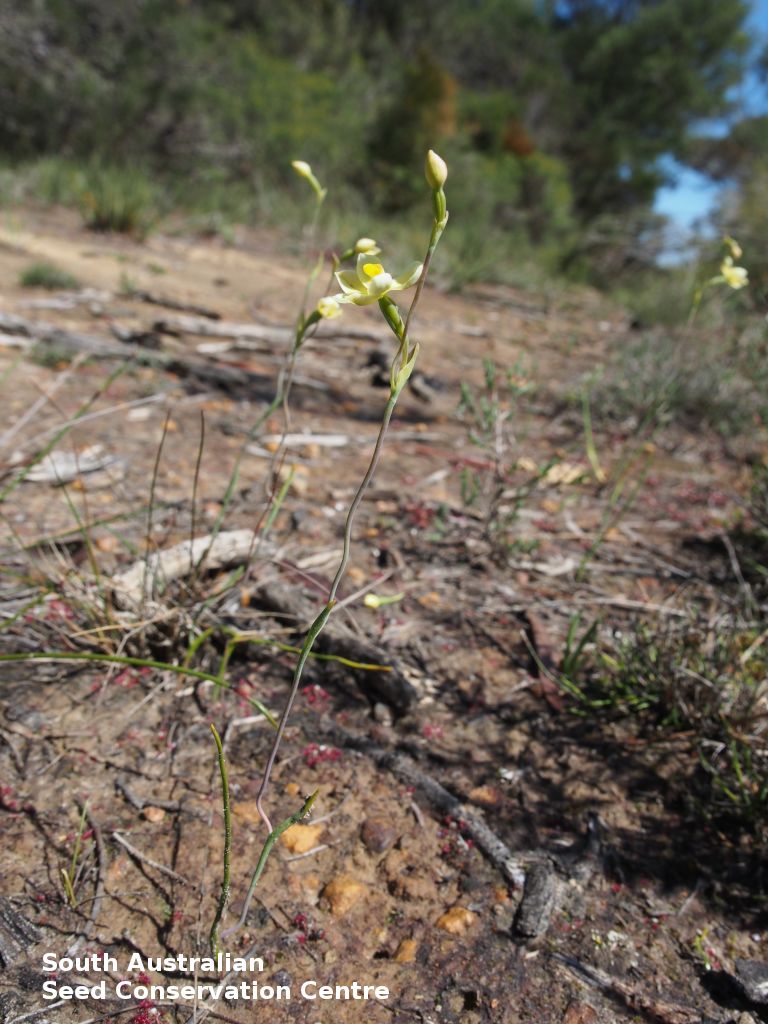
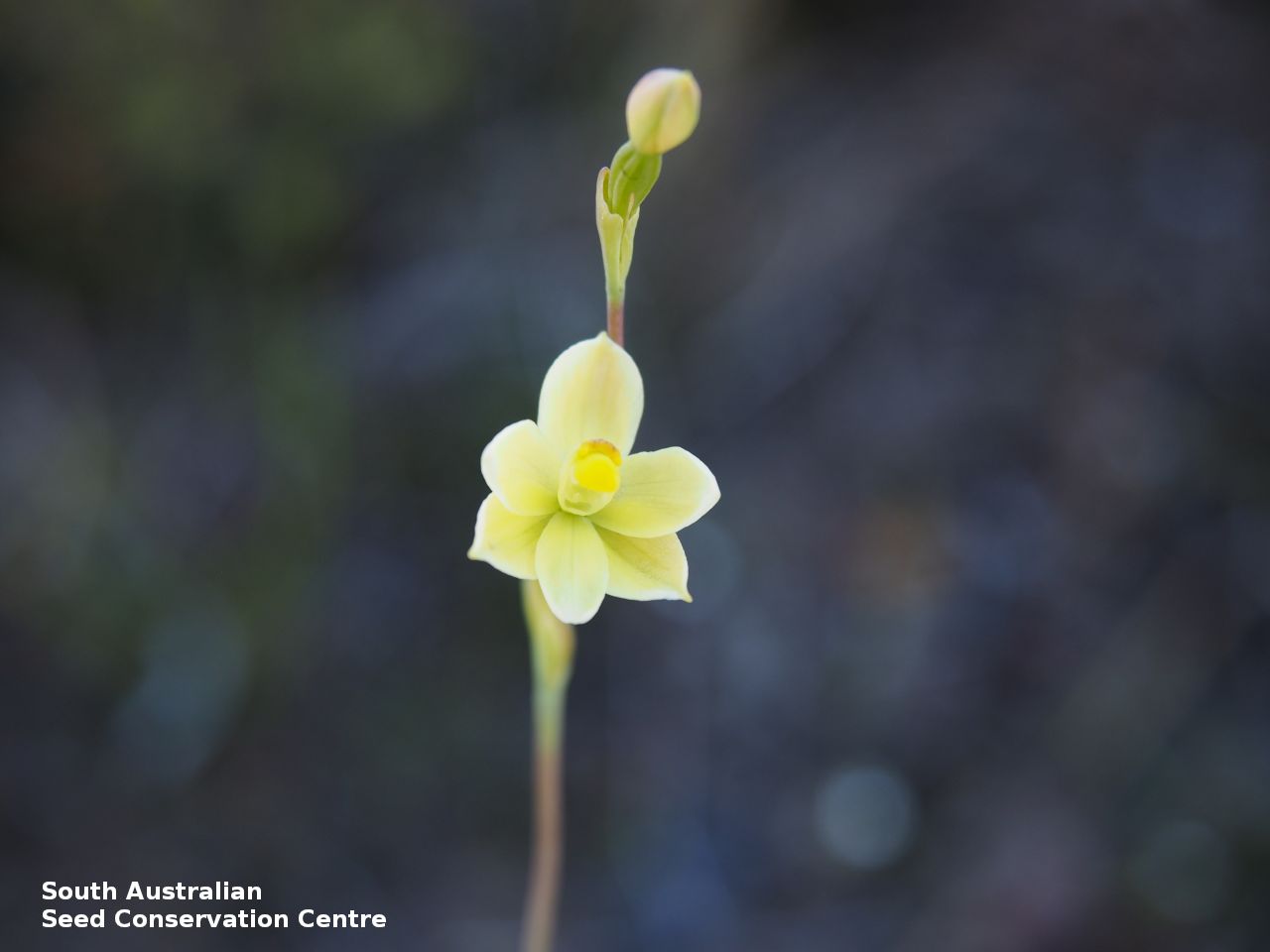
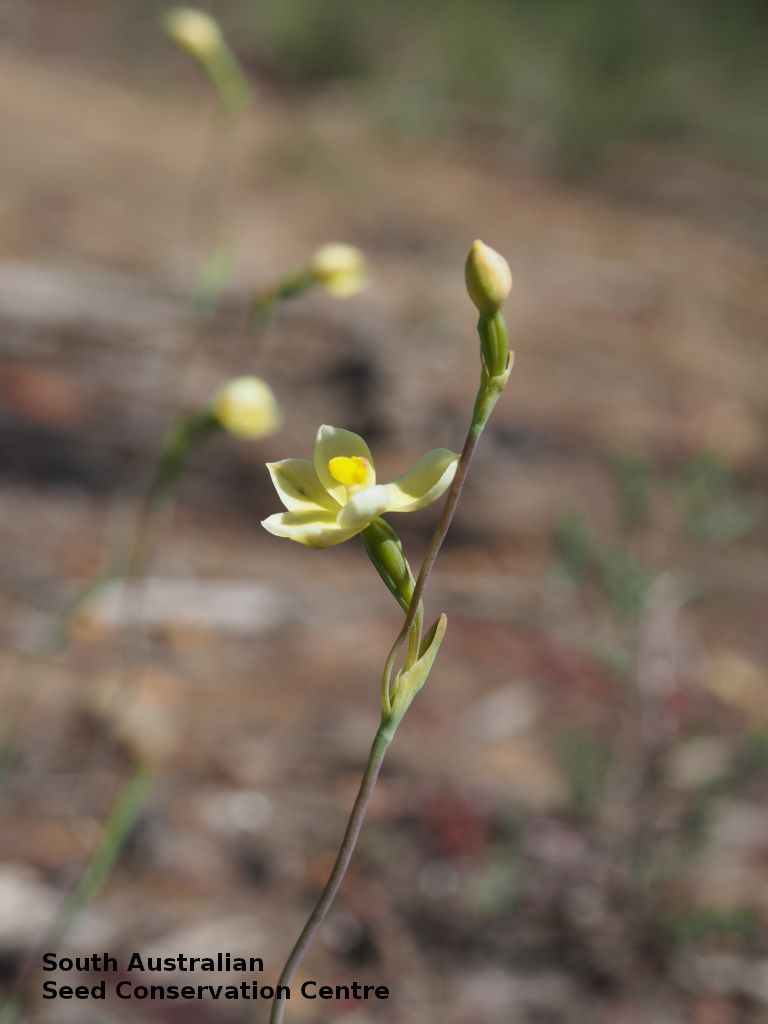
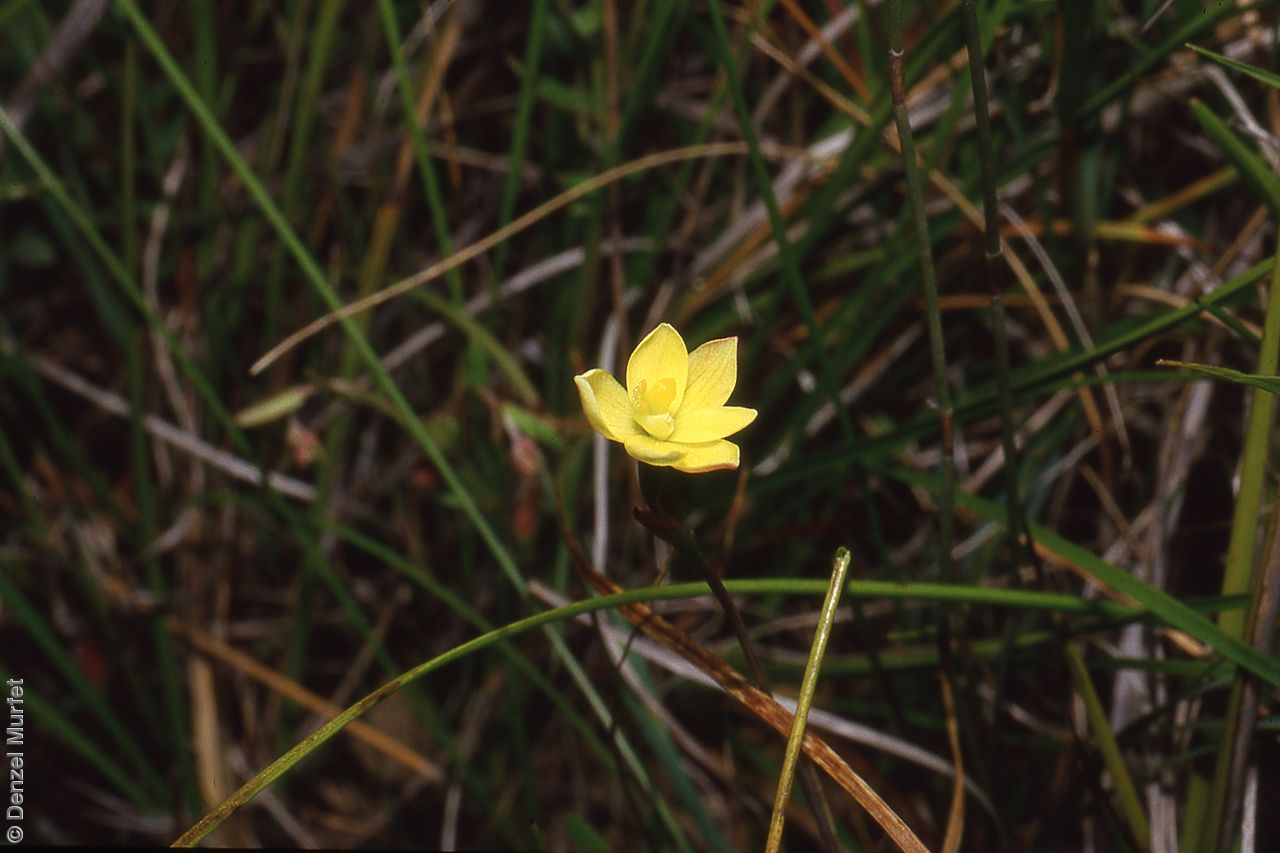
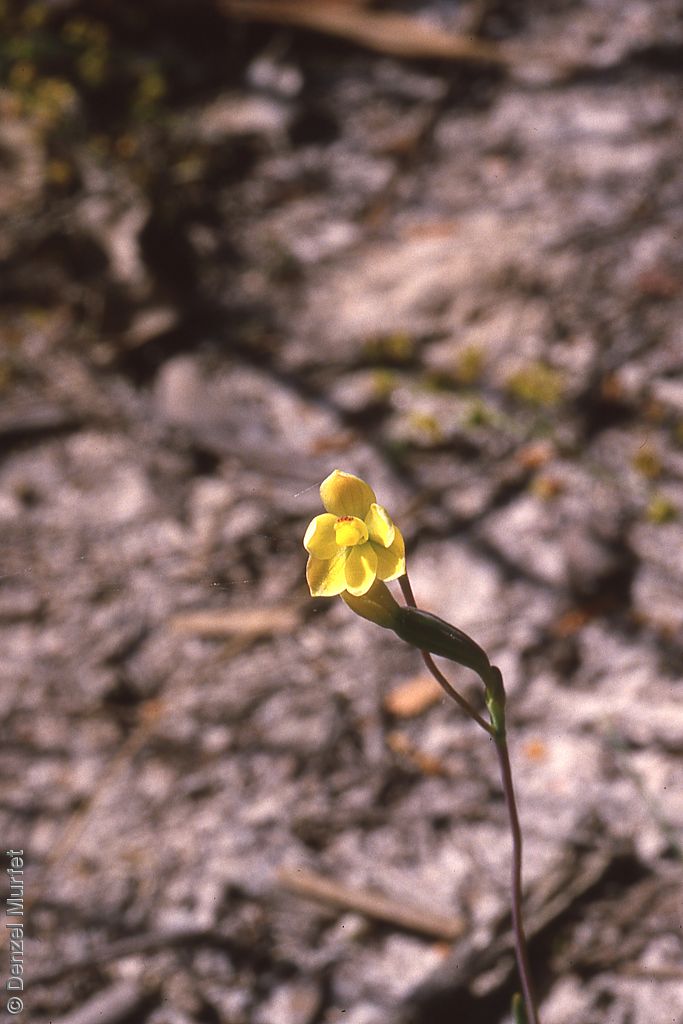
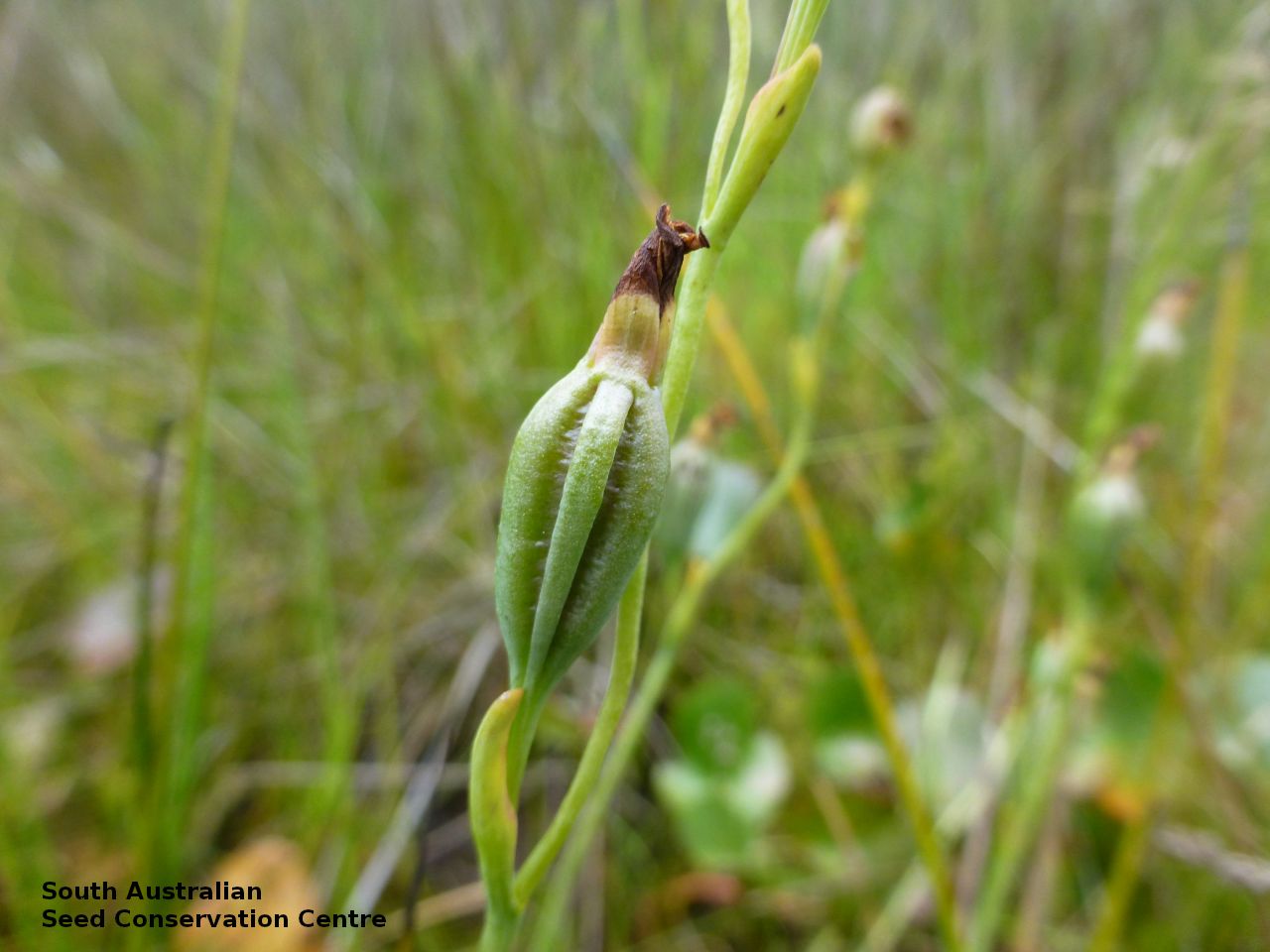
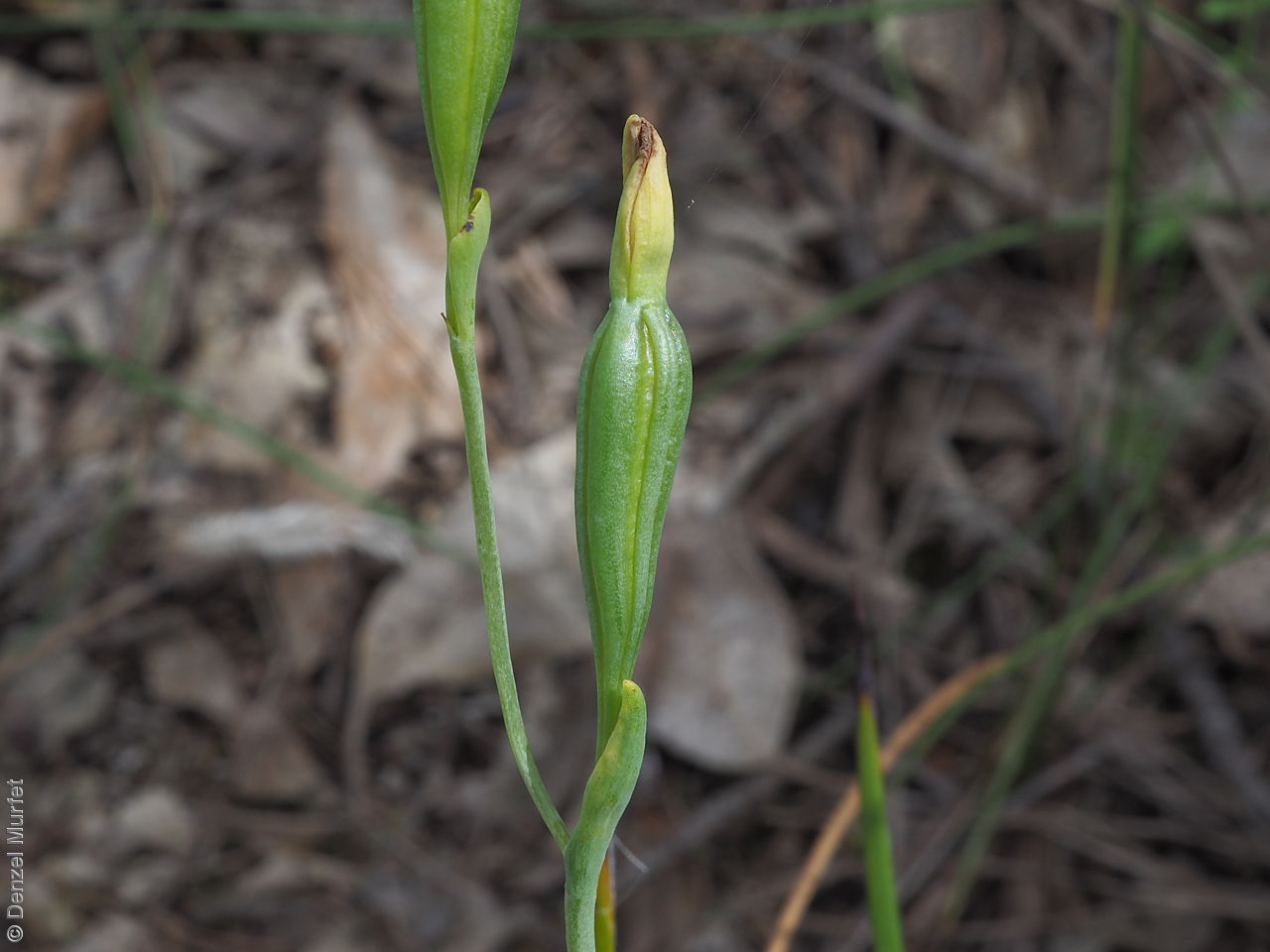
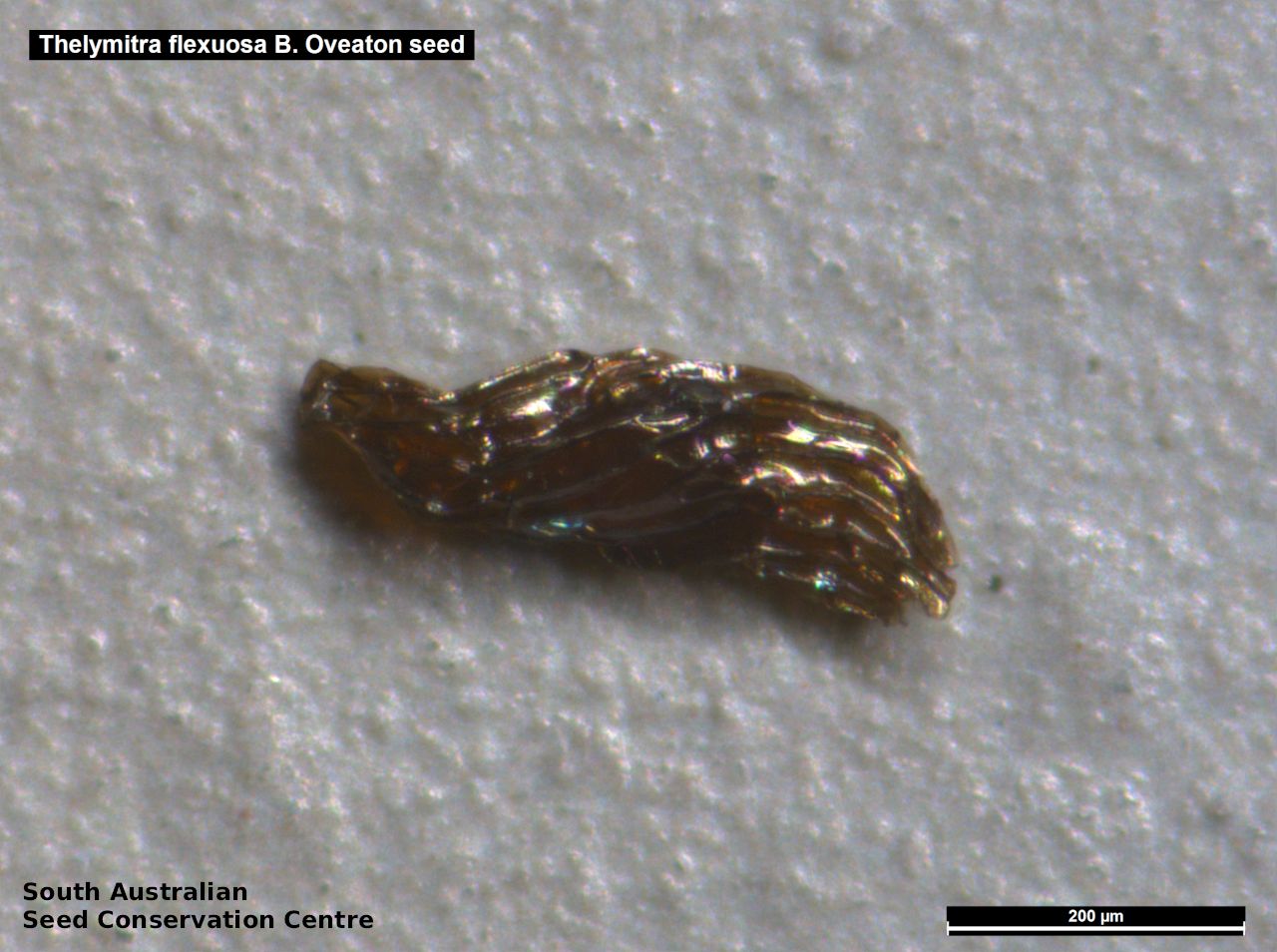
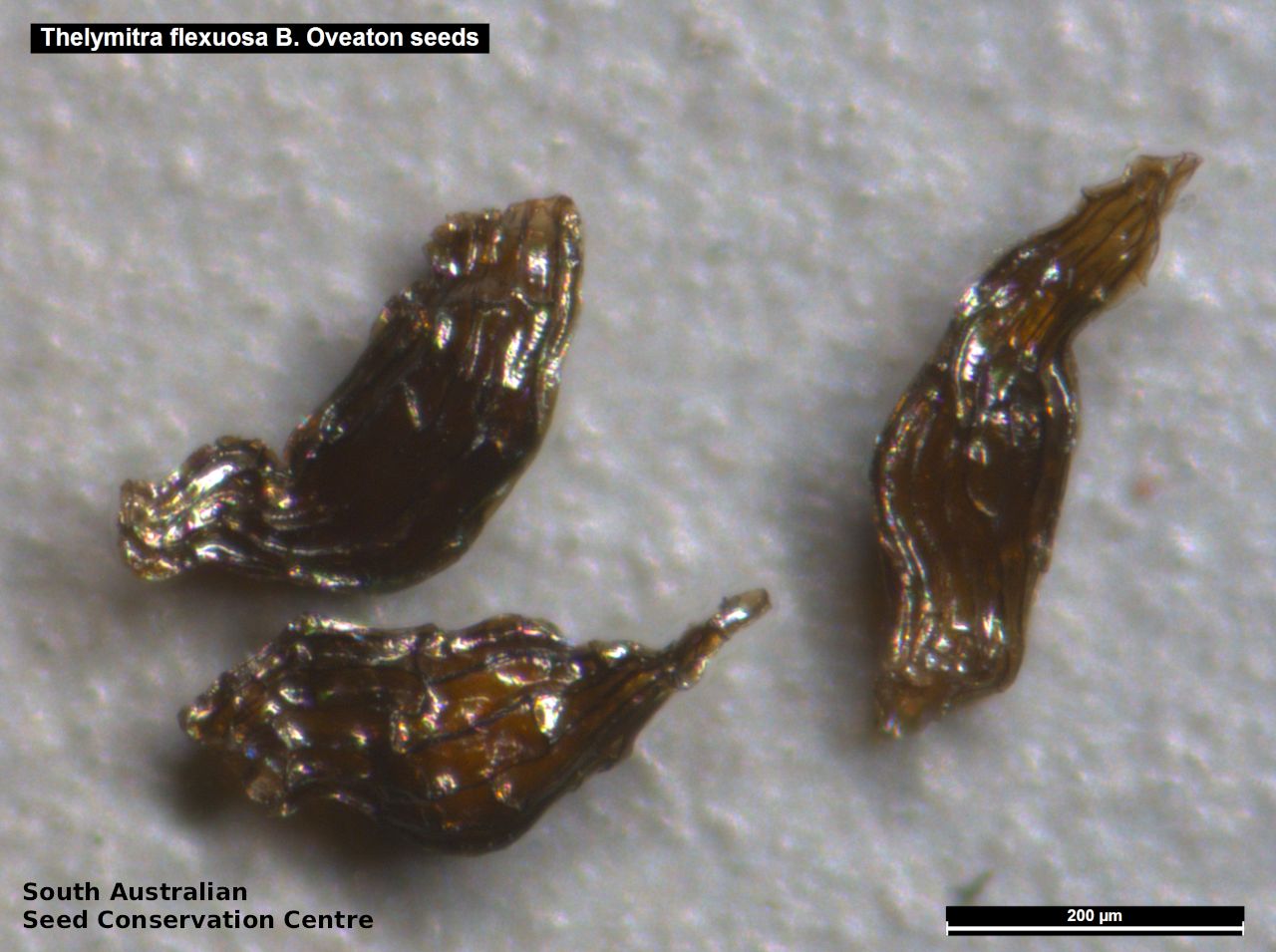

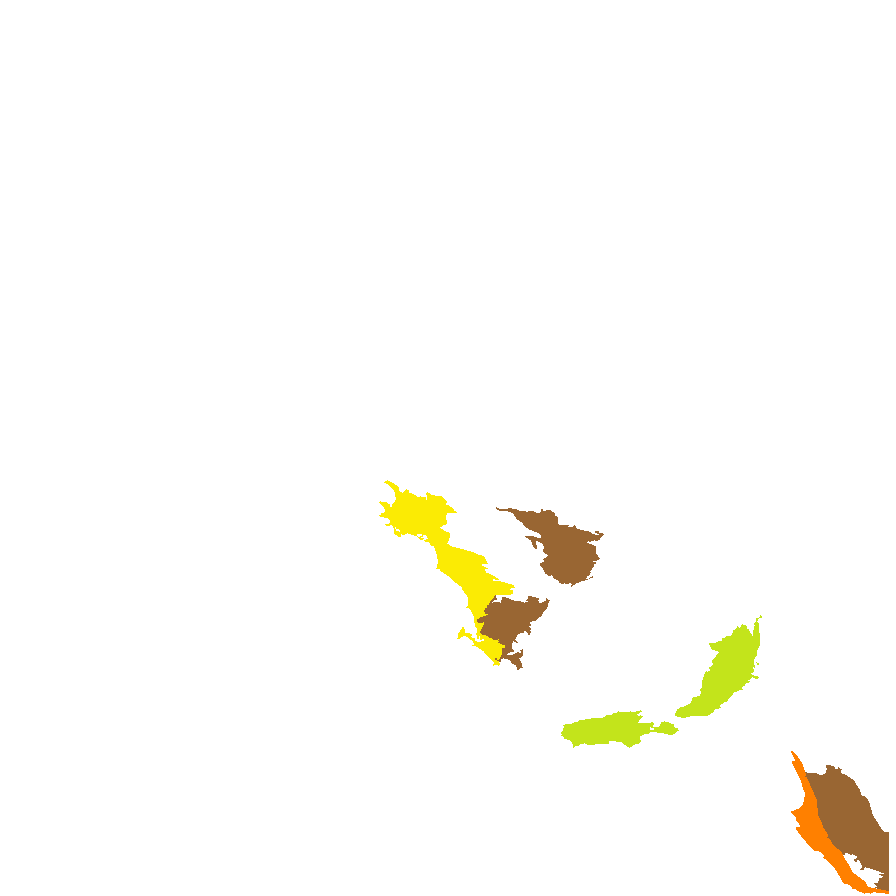
Botanical art
Prior names
Macdonaldia smithiana
Thelymitra smithiana
Common names
Zig-zag Sun-orchid
Twisted Sun-orchid
Etymology
Thelymitra from Greek 'thelys' meaning a bishop and 'mitra' meaning a headwear, hat, hence a bishop’s mitre, referring to the sometimes plumed or decorated wings of the column, which is usually produced behind and over the anther in a hood-like projection. Flexuosa from Latin meaning full of bends, crooked or winding, referring to its twisted or zig-zagged flowering stem.
Distribution and status
Found on the lower Eyre Peninsula, Kangaroo Island, southern Mount Lofty Ranges and the South-east in South Australia, growing on soil which is very wet in winter, in heathland, woodland and mallee scrub in higher rainfall districts. Also found in Western Australia, Victoria and Tasmania. Native. Uncommon in South Australia. Common in the other states.
Herbarium regions: Eyre Peninsula, Southern Lofty, Kangaroo Island, South Eastern, Green Adelaide
NRM regions: Adelaide and Mount Lofty Ranges, Eyre Peninsula, Kangaroo Island, South East
AVH map: SA distribution map (external link)
Plant description
Annual terrestrial orchid with very slender species stem to 20 cm high and a terete leaf above its opening, to 8 cm long. Inflorescence a very wiry, flexuose stem with 1-2 small, cream to canary-yellow flowers opening on hot days. Sepals firmer than petals, brownish on outer surface. Column ovoid, to 5 cm long, whitish-cream to light yellow. Flowering between September and November. Fruits are brown papery ellipsoid capsule. Seeds are very small dark brown ellipsoid seed with an ovoid translucent brown mesh-like covering.
Seed collection and propagation
Collect seeds between November and December. Collect fat capsules as they start to dry and turn brown. Pods will split and release the seeds quickly and will require monitoring. To increase the chances of collecting mature pods, it is recommended that a small breathable bag (ie. Organza bags) be used to enclose the developing capsules. Place the capsules in a container that will hold fine seeds and leave to dry for a few weeks or until the capsule split. Then carefully hold the capsule and tap it gently to release the seeds. Store the seeds with a desiccant such as dried silica beads or dry rice, in an air tight container in a cool and dry place, refrigerator or in liquid nitrogen. For the NVC South East Orchid Project one population consisting of more than 50 individuals was recorded from Topperwein Native Forest Reserve. Approximately 2000,000 seeds (0.67 g) were banked from this population. Seed viability for the collection was 86%. Seed germination in Thelymitra species is difficult in the absence of symbiotic mycorrhizal fungi.
| Location | No. of seeds (weight grams) | Number of plants | Date collected | Collection number Collection location | Date stored | % Viability | Storage temperature |
|---|---|---|---|---|---|---|---|
| BGA | 2,000,000 (0.773 g) | 50+ | 20-Nov-2013 | DJD2813 South Eastern | 1-Nov-2016 | 86% | -80°C |
| BGA | 5,000 (0.004 g) | 23-Nov-2015 | B.Overton Kangaroo Island | 1-Nov-2017 | N/C | -80°C | |
| BGA | 321,900 (0.250 g) | 20 | 11-Nov-2020 | Chookarloo, Kuitpo Forest Southern Lofty | 28-Jun-2021 | N/C | -18°C, -80°C |
Number of plants: This is the number of plants from which the seeds were collected.
Collection location: The Herbarium of South Australia's region name.
% Viability: Percentage of filled healthy seeds determined by a cut test or x-ray.